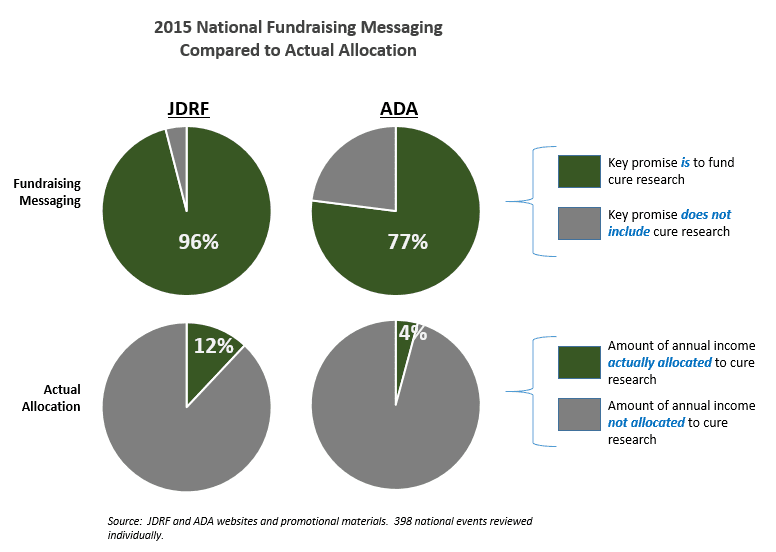
THIS IS THE FOURTH ANNUAL REVIEW OF THE MESSAGES THE ADA AND JDRF USE TO RAISE MONEY AT NATIONAL FUNDRAISING EVENTS, INCLUDING WALKS, GALAS, AND RIDES. THESE NATIONAL FUNDRAISING EVENTS GENERATE NEARLY $300 MILLION EACH YEAR AND ACCOUNT FOR TWO-THIRDS OFJDRF'S ANNUAL REVENUE AND ONE-THIRD OF THE ADA'S.
HIGHLIGHTS:
- Consistent with prior years, the great majority of national events either explicitly or implicitly promise that proceeds will be spent on a cure. In 2015, 96% of JDRF's national fundraising events and 77% of the ADA's events feature the promise to fund cure research.
- Over the past four years, nearly all of JDRF’s events feature a promise to use proceeds to fund cure research (Appendix A).
- While the ADA continues to use a cure funding promise at the vast majority of its national fundraising events, the percentage of events that promise a cure has declined from 89% in 2012 to 77% in 2015, due to the organization‘s increased number of Father of the Year events, which do not feature the cure promise.
- The majority of participants at these events rank cure research as their top funding priority (Appendix B).
- The fundraising promise and the actual use of donations is not aligned. Only a small portion of donations are actually spent on cure research. Last year, approximately 12% of JDRF's annual revenue went to type 1 cure research, while the ADA directed only 4.2% of its income to a T1D cure.
Explanatory Note:
Examples of events with explicit cure messaging use the word “cure” in the event name, such as Walk to Cure Diabetes, Crossroads to a Cure, or Ride to Cure Diabetes. Event titles that implicitly suggest a cure include Promise Gala or Stop Diabetes. In both cases, the promise of a cure is a major selling point for the event, and participants come away with the impression that their contribution will further cure research.


